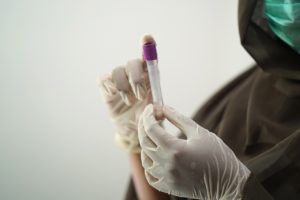Embryonal Rhabdomyosarcoma (ERMS)
What is embryonal rhabdomyosarcoma?
Embryonal rhabdomyosarcoma (ERMS) is a form of sarcoma that grows from the cells intended to become skeletal muscles called rhabdomyoblasts. Because it forms in these cells, it is much more common in children under the age of five, although anybody can be affected. It tends to grow in the bladder, neck area, vagina, the prostate, or in/around the testicles.
What are the symptoms of embryonal rhabdomyosarcoma?
Symptoms can differ depending on the location of the cancer, but common effects include:
- Crossing/bulging eyes
- Blood in the urine
- Issues with defecating and urinating
- Bleeding from the nose, rectum, throat, or vagina
- Headaches
What causes embryonal rhabdomyosarcoma?
Medical professionals are unsure of what causes this cancer. They know that the DNA of rhabdomyoblasts mutates so that the cells become malignant, but they do not know how or why.
How is embryonal rhabdomyosarcoma diagnosed?
Doctors will first perform a physical exam, followed by evaluating medical and family history. They will also use imaging tests like CT scans, MRIs, and X-rays. PET and bone scans may also be necessary for diagnosis, along with bone marrow biopsies, lumbar punctures, and biopsies.
What are the treatments for embryonal rhabdomyosarcoma?
Doctors will form a treatment plan based on the cancer’s stage, the patient’s overall health, possible side effects of therapies, and patient preference. The most common treatment options are chemotherapy, radiation, and surgery to remove a tumor. Symptomatic treatment will also be utilized.
Where can I find out more about embryonal rhabdomyosarcoma?
Embryonal Rhabdomyosarcoma Articles

A Colon Cancer Diagnosis During Pregnancy Led This Mother to Learn She Had Li-Fraumeni Syndrome

Teen Who Survived Pediatric Rhabdomyosarcoma Will Captain Scotland’s Cheer Team

Hockey Community Fundraises After Multiple Families Touched by Sarcoma

Study of the Week: Liquid Biopsy Could Help Direct Rhabdomyosarcoma Treatment


Sophie Died Due to Poor Care, Now British Parliament is Holding a Debate on Childhood Cancer

Patient Story: Donation for Prosthetic After Battle with Rhabdomyosarcoma







